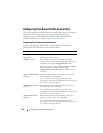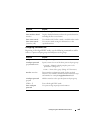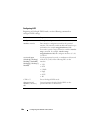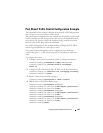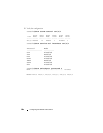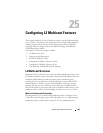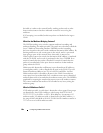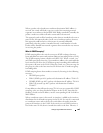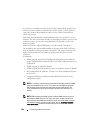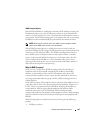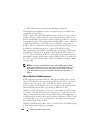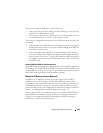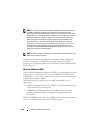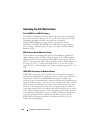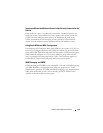
806 Configuring L2 Multicast Features
the switch sees a multicast router in the VLAN, it forwards the group to the
multicast router and does not flood in the VLAN. There is a user option to
cause the switch to flood multicast sources in the VLAN if no multicast
clients are present.
By default, dynamically discovered multicast routers are aged out every five
minutes. The user can control whether or not multicast routers age out. If all
multicast routers age out, the switch floods the VLAN with any received
multicast groups.
Multicast routers send an IGMP query every 60 seconds. This query is
intercepted by the switch and forwarded to all ports in the VLAN. All hosts
that are members of the group answer that query. The switch intercepts the
replies and forwards only one report per group from all of the received
responses.
In summary:
• IGMP snooping controls the flooding/forwarding behavior for multicast
groups. Multicast data is flooded in the VLAN until a multicast router port
is identified.
• IGMP snooping is enabled by default
• IGMP snooping forwards multicast sources to multicast routers by default
• Reserved multicast IP addresses (224.0.0.x) are always flooded to all ports
in the VLAN
• Unregistered multicast traffic may be flooded in the VLAN by a user
configuration option.
NOTE: It is strongly recommended that operators enable MLD snooping if IGMP
snooping is enabled and vice-versa. This is because both IGMP snooping and
MLD snooping utilize the same forwarding table and not enabling both may
cause unwanted pruning of protocol packets utilized by other protocols, e.g.
OSPFv3.
NOTE: IGMP snooping (and IGMP querier) validates IGMP packets. As part of
the validation, IGMP checks for the router alert option. If other devices in the
network do not send IGMP packets with the router alert option, IGMP snooping
(and snoooping querier) will discard the packet. Use the no ip igmp snooping
router-alert-check command to disable checking for the router alert option.



